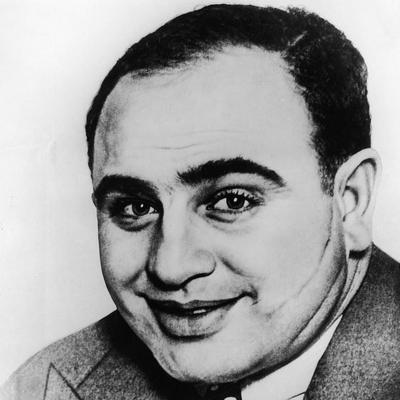What Was Al Capone's Net Worth?
Al Capone, an infamous American gangster, had an inflation-adjusted net worth of $100 million at his death. He rose from being a bouncer for organized crime locales to leading the notorious Chicago Outfit.
During the Prohibition era, Capone's influence surged, enduring a seven-year reign as a crime boss before being imprisoned for tax evasion in 1932. Known for his violent bootlegging expansion, Capone maintained influential ties with city officials, like Mayor William Hale Thompson. The Saint Valentine's Day Massacre marked his downfall, pushing citizens to call for government action.
Al Capone's legacy has been immortalized in films such as "Al Capone," "The St. Valentine's Day Massacre," and "Capone," as well as the TV series "The Untouchables." He served nearly eight years of his 11-year sentence, being released in 1939 due to deteriorating health, and died at 47 in January 1947 after a stroke and cardiac arrest.
Peak Income
At his peak, Al Capone's empire generated an estimated $60 million from illegal alcohol, $25 million from gambling, $10 million from vice, and another $10 million from various other ventures, totaling $105 million annually. Adjusted for today’s rates, this equates to approximately $1.5 billion per year.
Early Life
Alphonse Gabriel Capone was born on January 17, 1899, in Brooklyn, New York, to Italian immigrants Teresa and Gabriele Capone. Among his eight siblings, Salvatore and Raffaele, known as Frank and Ralph, joined his criminal activities. Expelled from Catholic school at 14 for hitting a teacher, Al worked at a bowling alley and a candy store and played semi-professional baseball for two years.
Career
Capone's criminal career began with small-time New York gangs, evolving to join the more powerful Five Points Gang. He worked for Johnny Torrio at the Harvard Inn and earned the nickname "Scarface" after a fight. Moving to Chicago in 1919 on Torrio's invitation, Capone became a bouncer in a brothel and climbed the criminal ladder. By 1925, Capone was leading Torrio's empire, imposing violent tactics to dominate the liquor market during Prohibition. Surviving several assassination attempts, Capone's notoriety grew.
In 1929, amidst allegations of murders including the Saint Valentine's Day Massacre, Capone's violent reputation peaked. Although in Florida at the time, he was believed to have orchestrated the massacre aimed at eliminating rival Bugs Moran. To improve his public image, Capone engaged in charity work and opened a soup kitchen.

Arrested for carrying a concealed weapon in 1929 and later for tax evasion in 1931, Capone was sentenced to 11 years in federal prison. Diagnosed with syphilis and gonorrhea, he served part of his sentence at Alcatraz.
Personal Life
Al Capone married Mary Josephine Coughlin on December 30, 1918, and they had a son, Albert Francis "Sonny" Capone. Despite his father's legacy, Sonny led a relatively lawful life, changing his name to Albert Francis Brown in 1966. Capone's infidelities caused personal strife, as Mae advised Sonny against emulating his father.
Death
Released from prison in 1939 due to health issues, Capone was treated at Union Memorial Hospital and later at his Palm Island, Florida, home. Treated with penicillin in 1942 for syphilis, he remained debilitated, exhibiting the mentality of a 12-year-old by 1946. A stroke and subsequent complications in January 1947 led to his death on January 25, 1947. Capone was buried in Chicago's Mount Olivet Cemetery, later relocated to Mount Carmel Cemetery.
Real Estate
In 1928, Capone bought a 6,077 square foot mansion in Miami Beach's Palm Island for $40,000. This property, situated on a 30,000 square foot lot, sold for $10.75 million in September 2021.








